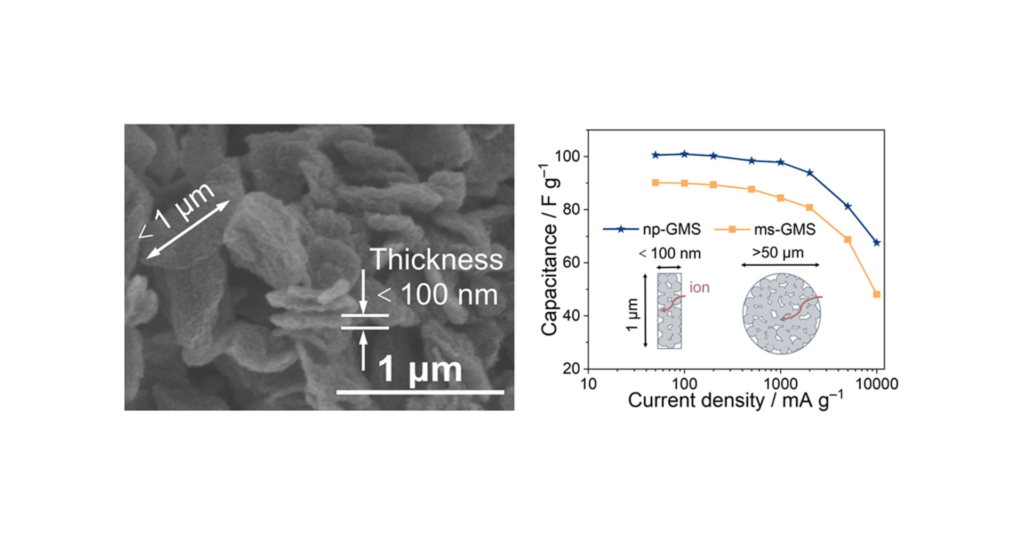New research results on Graphene MesoSponge® (GMS), a next-generation carbon material that 3DC plans to mass-produce, have been published from Nishihara Laboratory.
3DC is the university start-up company that aims to commercialize GMS, which was invented at the Nishihara Laboratory (Advanced Institute for Materials Research, Tohoku University). Currently, some patents related to GMS have been transferred from Tohoku University to 3DC.
Electric Double-Layer Capacitors (EDLCs) have received considerable attention in the field of energy storage due to their high output and longevity compared to batteries. However, their lower energy density has long been a challenge.
In this research, a novel form of GMS, nanoplate GMS (np-GMS), different from traditional particulate GMS, was synthesized and used as electrodes in EDLCs.The results showed that np-GMS increased the energy density beyond that achievable with particulate GMS or commercial activated carbon.


The introduction of np-GMS is believed to open up new possibilities for improving the performance and industrial feasibility of GMS in EDLCs.
The results of this study were published in the journal Electrochimica Acta.
Please see below for details.
・Paper
Mesoporous nanoplates consisting of seamless graphene frameworks
(Electrochimica Acta Volume 484, 20 April 2024. 144034)

